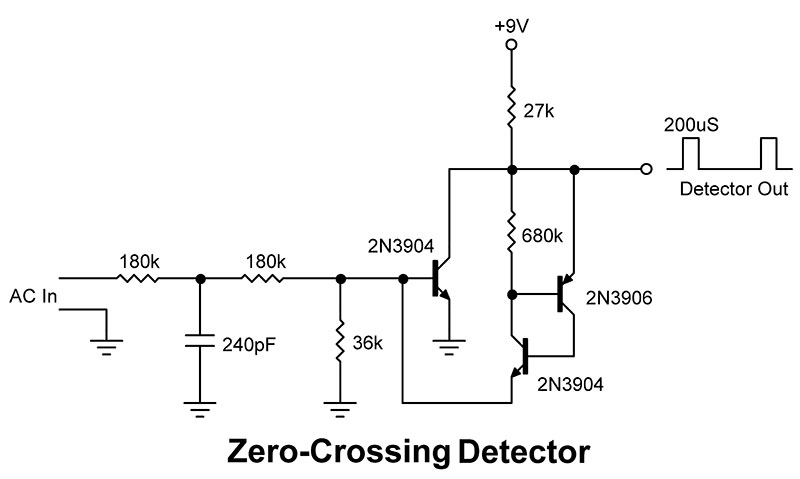With TJ Byers
Zero-Crossing Detector
Question:
I have a rotating magnet that generates a two-phase, 100-Hz signal at 35 volts. What I need is a circuit that produces a pulse each time phase one makes a zero crossing. (At this point, the phase 2 sinewave is at its peak.) I designed such a circuit about 25 years ago using NAND gates that has served me well — until lately, when it died. Unfortunately, the semiconductors I used are no longer available, so I can't repair or replace the circuit. I'm hoping you have an updated design.
Neil Curry
N. Hollywood, CA
Answer:
I have a popular design (as in I didn't create it myself) that's often used in commercial equipment as a zero-crossing detector. The circuit uses just three inexpensive transistors and a handful of passive parts. Basically, the detector is a pulse generator that is triggered by a zero-voltage input. The input RC network acts as both a voltage divider (attenuator) and filter. For the values shown, the output pulse is 200 microseconds wide.



Comments